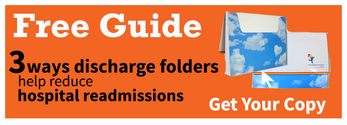When you're in the business of saving lives, healing and humanity are at the heart of all you do.  Yet, something as far afield as cold, hard numbers—trends. benchmarks, percentages, statistics—play a surprising, and increasingly significant, role in success.
Yet, something as far afield as cold, hard numbers—trends. benchmarks, percentages, statistics—play a surprising, and increasingly significant, role in success.
The Hospital Consumer Assessment of Healthcare Providers and Systems (HCAHPS) survey is one example of how numbers are becoming increasingly important to hospitals from a business standpoint—both to avoid losing Medicare reimbursement and maintain market share.
Reimbursements and market share
The Hospital Value-Based Purchasing (Hospital VBP) program links a portion of Medicare reimbursement payment to performance based on a set of quality measures. Hospitals are financially penalized for low HCAHPS scores under the Hospital VBP program.
In addition, HCAHPS scores are available publicly and growing involvement of patients in selecting their healthcare facility means hospitals must focus on the patient experience more than ever before to protect market share.
Improving the patient experience
So how can hospitals boost their HCAHPS scores? To be successful, the focus on the patient experience has to be a part of an overall evolving culture for hospitals, where service excellence is valued and nurtured consistently for optimal HCAHPS scores and best possible patient care. There are a number of ways hospitals are attempting to improve their scores, including often costly measures, such as launching more walk-in clinics for ease of follow-up care or increasing staff availability on weekends.
But hospitals can also help boost their HCAHPS score by focusing on less-costly activities related to two pivotal processes: improved communications and patient education.
Most patients today expect high-quality healthcare, even taking it for granted to some extent.
Patients leaving positive marks via HCAHPS surveys consistently mention specific patient experiences rather than specific incidences of medical care, such as providers taking time to speak to them or hospital staff carefully explaining post-discharge instructions.
In his blog post titled, "Simultaneously Enhance HCAHPS Scores and Patient Flow," Dr. Darin Vercillo, co-founder and CEO of patient flow software firm Central Logic, noted, "In medicine, good communication is the action most highly praised by patients and families. 'My nurse explained to me…' and, 'the doctor sat and talked to us…' are phrases associated with high HCAHPS scores. You never see a comment card saying, 'my nurse ran that infusion so well,' or 'my doctor picked the perfect antibiotic.'"
Rightly or wrongly, the patient experience is often more likely to play a bigger role in boosting HCAHPS scores than improvements in safe, quality care.
Communicating and educating
Hospitals are paying more attention to verbal instructions and direct communications with patients during their stay and at the time of discharge, as well as in the first few weeks at home. Hospitals are adding a number of communications tools, from wipe-off boards in patient rooms to follow-up calls at home.
Ruth Ragusa, RN, and vice president of organizational effectiveness and performance improvement at South Nassau Communities Hospital, Oceanside, N.Y., told Becker's Hospital Review, that patients should be educated from the moment they enter the hospital so they are prepared to care for themselves at home. Rely on videos and provide written detailed instructions, she suggests.
Conversations with patients and caregivers are also being supplemented with printed materials organized in a take-home transition folder provided to patients at time of discharge. These discharge folders are useful for both communications and education purposes.
Organizing professionally printed materials in an appealing accordion folder as the central component of a patient's discharge kit enables patients and family members to refer to these informative documents at home, relieving them of the burden of trying to remember detailed verbal instructions.
The use of accordion folders or similarly designed discharge materials allows for instructions, medication information, patient condition educational materials and a number of other documents to be organized in a way that puts critical materials at the patients fingertips.
In addition to general hospital information, transition folders can include such documents as key contact information, appointment schedules, disease-specific discharge instructions, lists of medications, medication explanations and similar useful pieces of literature.
Hospitals are even finding that providing loose printed materials is not as effective as providing them in an easy-to-use transition folder, reducing the chance that vital information could be misplaced or discarded.
Improving the patient experience can seem like a huge undertaking. But making micro-changes, such as improved communication and education at discharge, can actually have a significant impact in HCAHPS scores.

